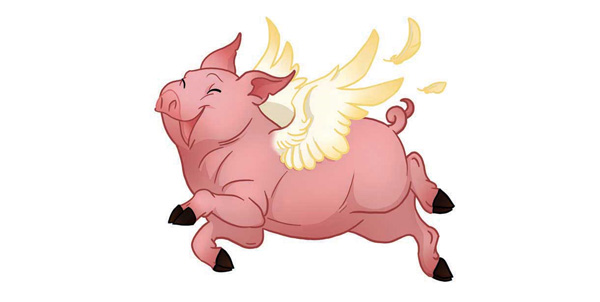In as much as you adore your humble blogger, one can only hope that you will forgive the pun in today’s blog post title.
Applicant suffered a stroke while working as a journeyman screen printer in the case of Francisco Amaya v. California Printed. Mr. Amaya was given the job of printing thirty six flags and a deadline of 1:00p.m. The trial evidence differed on whether he was assigned this task at 8:00 a.m., allowing for five hours, or at 9:30 a.m., allowing for three and a half hours. In any case, because of the “stressful working condition” of having to make so many flags to print in so little time, applicant suffered a stroke. Also contributing to the stroke was the fact that he had stepped on a spray can, causing him to fall to the ground. Sounds pretty bad, no?
Well, some facts might clear this up. Applicant suffered his stroke a little before 11:00 a.m., and at that time had completed six of his assigned thirty six flags. So, that means that he had between 1.5 and three hours to print the six flags, leaving another 30 to be completed by 1:00 in the afternoon. How many flags could YOU print in that short a time period? 10? 20? Well, if you’re one of applicant’s co-workers, it would probably take you thirty minutes, which is what it took another employee who was assigned the remainder of Mr. Amaya’s workload. Not so much of a “high pressure” situation any more, is it?
Also, what may have contributed to the stroke was the non-industrial and untreated “hypertension, hypercholesterolemia, and diabetes” which applicant had at the time of the stroke.
So, here is what the panel QME did with this case:
1) He ordered a CT scan of applicant’s head, because head trauma “could have been a precipitating or enhancing factor.” Without having seen the CT scan results, eh concluded that applicant’s stroke was caused by 25% industrial factors and 75% non-industrial factors. When he later saw that the CT scan showed no head trauma, he declined to change his opinion.
2) He also found that his stroke could have been a reaction to stepping on a spray can, but if he did not step on the spray can, the PQME would not change his opinion.
Here is how your skeptical blogger reads these facts: “well, I’m not going to let these facts let this guy walk away from this thing empty-handed.”
The defense argued that the PQME’s opinions do not constitute substantial medical evidence – this lunacy of a medical opinion does not justify its findings and seems unmoved by any shifting facts. So, what do you think the Workers’ Compensation Judge did with this?
The WCJ threw it out of her courtroom! She found that the PQME “did not explain the bases for his opinion that Applicant’s work activities … constituted 20-25% of the causation of the stroke, irrespective of the pace at which Mr. Amaya was required to work.” The injury was ruled non-compensable, and applicant’s request to take a second bite at the apple further develop the record was denied as the PQME “has been given ample opportunity, through the deposition process, to provide support for his opinions… [he] has not provided the necessary support, and … further discovery such as another deposition is not likely to yield a properly supported opinion.”
The Workers’ Compensation Appeals Board denied applicant’s petition for reconsideration and incorporated the WCJ’s report.
Curious about this Northern California PQME who hands out causation like it’s candy? Please shoot me an e-mail for the panel opinion: gregory@grinberglawoffice.com


I’m more interested in knowing who the Judge was that followed the law and saw through the PQME, who was probably a chiropractor.
Very well written and provocative post.
Kudos to the WCJ that dared disagree with the QME’s findings on causation. Most often, the median WCJ will slavishly follow the findings of QME or AME knowing that such decisions are generally review-proof as the judge is merely following the unbiased evidence in the case. To exploit your pun on second bite at the apple, most QMEs and AMEs merely seek to split the proverbial apple but finding injury and then slicing off a piece of the apple for the defendant as a sop.
An honest QME or AME will sometimes hit the defendant hard and other times find no injury at all if an objective analysis supports that conclusion. Too often QMEs and AMEs view their role as diplomatic mediators, giving each side a piece of the apple with an invitation to return to that doctor for more of the same mediocre sharing of the apple pie.
Ed, that’s true. They also have difficulty moving away from the “treator” role, where they might deal with an injured patient who wants to get better. They are often dealing with someone who is being advised by a season attorney to maximize an award, only to “recover” and be able to go back to work once the money is paid.